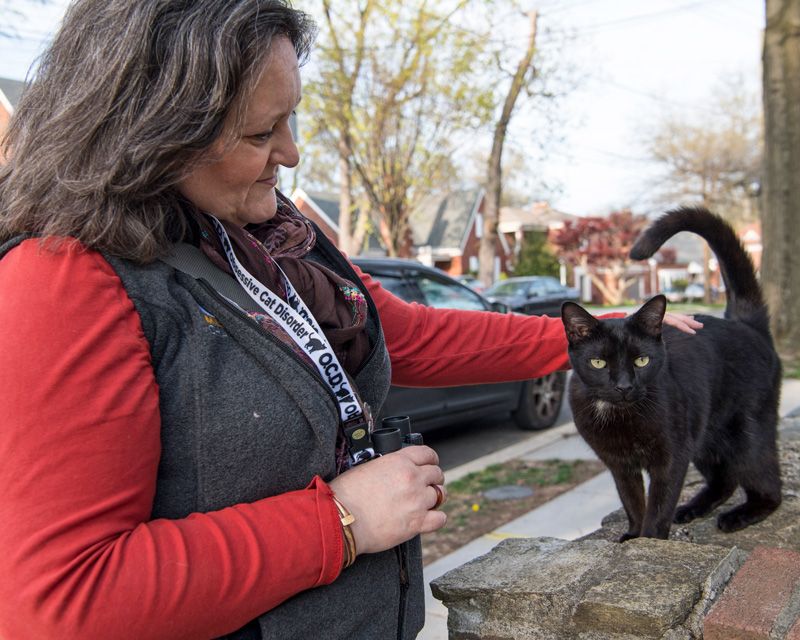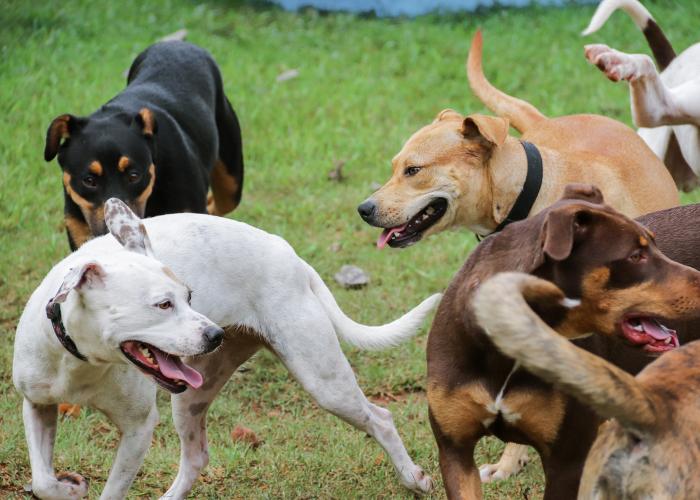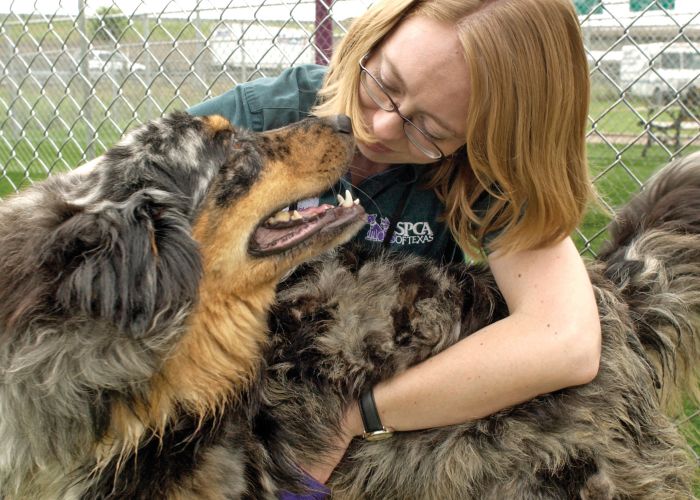Up for the count
Collaborative project aims to revolutionize the way communities count and care for cats

As the first morning visitors to the National Zoo stroll through the entrance, two field technicians with backpacks head in the opposite direction, over Rock Creek, across a parkway carrying commuters into downtown Washington, D.C., and up a steep, muddy hillside.
Leaving runners and dog walkers in the valley below, the two men follow a narrow path worn in the leaves. Dan Herrera, an urban ecologist, and Justin Belsley, a cat colony caregiver with experience in behavioral science research projects, consult a map on a tablet and search for their two motion-activated camera traps, one locked to the bottom of a fence, the other to the base of a tree a little farther on.
First, they push the off buttons—until they do, the cameras will take five rapid shots at a time, and Herrera and Belsley, who both work for the Humane Rescue Alliance in D.C., have grown tired of looking at multiple close-ups of their own faces. Then they remove the memory cards and quickly view the stored images to get an idea of what the cameras have captured.
They see plenty of foxes, caught in a bright burst of a camera flash or slinking furtively by, their red fur dimmed to gray in the darkness, and also deer. But they do not see what they are looking for in this groundbreaking study backed by Humane World for Animals: cats.
There are 61 square miles of land to the District of Columbia—and an unknown number of outdoor cats. Here and elsewhere across the country, the exact size of the feline population has been a mystery, the subject of guesswork, impressions, anecdotes and occasional alarming speculation. The DC Cat Count, a three-year, $1.5 million effort, aims to change this.
Cats “are not necessarily right out there for you to see; they are small, they hide, they blend in,” says Danielle Bays, Humane World for Animals community cats program manager. “This work is going to help the entire field of animal welfare. It’s going to be a real game changer. We are aiming to make a big shift in how we manage cat populations.”

Until now, researchers might set camera traps in an area, or walk scientifically plotted routes (called transects), or survey cat owners or people who feed cats, or look at shelter numbers. But each of these methods alone is just a piece of a bigger puzzle. Never before has a feline census gotten the investment of money and time—or the necessary cooperation between wildlife biologists, cat advocates and animal welfare professionals—to use all these methods at once across a city.
“Nobody’s put the pieces together,” says John Boone, a wildlife biologist at the Great Basin Bird Observatory, who worked with Humane World for Animals to design the new approach.
The DC Cat Count was launched in 2018 by Humane World, the Humane Rescue Alliance and PetSmart Charities, along with Boone and Tyler Flockhart, a leading researcher on cat population dynamics. The Smithsonian Conservation Biology Institute, whose staff includes experts in using camera traps, leads the outdoor part of the study. Money for the project comes from PetSmart Charities, the ASPCA, Maddie’s Fund, Winn Feline Foundation, Beatrice von Gontard and Cat Depot.
Using all the pieces of the puzzle and statistical models, Flockhart aims to develop a way to show how various cat populations interact and how best to help owned cats, outdoor cats and cats in the shelter system. This will allow communities to take a more scientific approach to providing services for cat owners, humanely reducing outdoor cat populations and decreasing threats cats pose to birds and other wild animals. While the research is being done in D.C., lessons learned can be applied across the country.
“This work is going to help the entire field of animal welfare. It’s going to be a real game changer.”
—Danielle Bays, Humane World for Animals Community Cats program manager
Last spring, Humane World for Animals and Humane Rescue Alliance staff and volunteers started walking neighborhood transects two hours before sundown, trying to spot cats along routes Boone plotted to sample parts of the city. Last fall, Herrera and Belsley began walking transects in other parts of D.C. selected by Flockhart and the project’s research team and placing and checking camera traps. They are now sorting through tens of thousands of captured images. Added to that will be data from the Humane Rescue Alliance (which operates the District’s only shelters and a trap-neuter-return program), surveys of residents and colony caregivers, and photos from a mobile phone app people can use to take pictures of their indoor/outdoor pets, as well as cats they encounter outdoors.
Researchers will try to match the cats in camera trap photos—using fur markings, ear notches, collars or scars—with pictures of owned and shelter cats to identify individual animals, eliminate duplication and figure out how cats move from one situation to another, particularly from having homes to being abandoned or lost. As Flockhart, a population ecologist overseeing the project for the DC Cat Count, puts it, “How many cats are there when you can’t actually see all the cats at any one time?”
Already, camera traps are finding (as expected) many cats in residential neighborhoods and very few in the city’s Rock Creek Park, where foxes and coyotes roam.
By 2021, researchers will have a much better understanding of the until-now mysterious world of cats. Bays can’t wait. “It’s going to be really, really interesting.”







